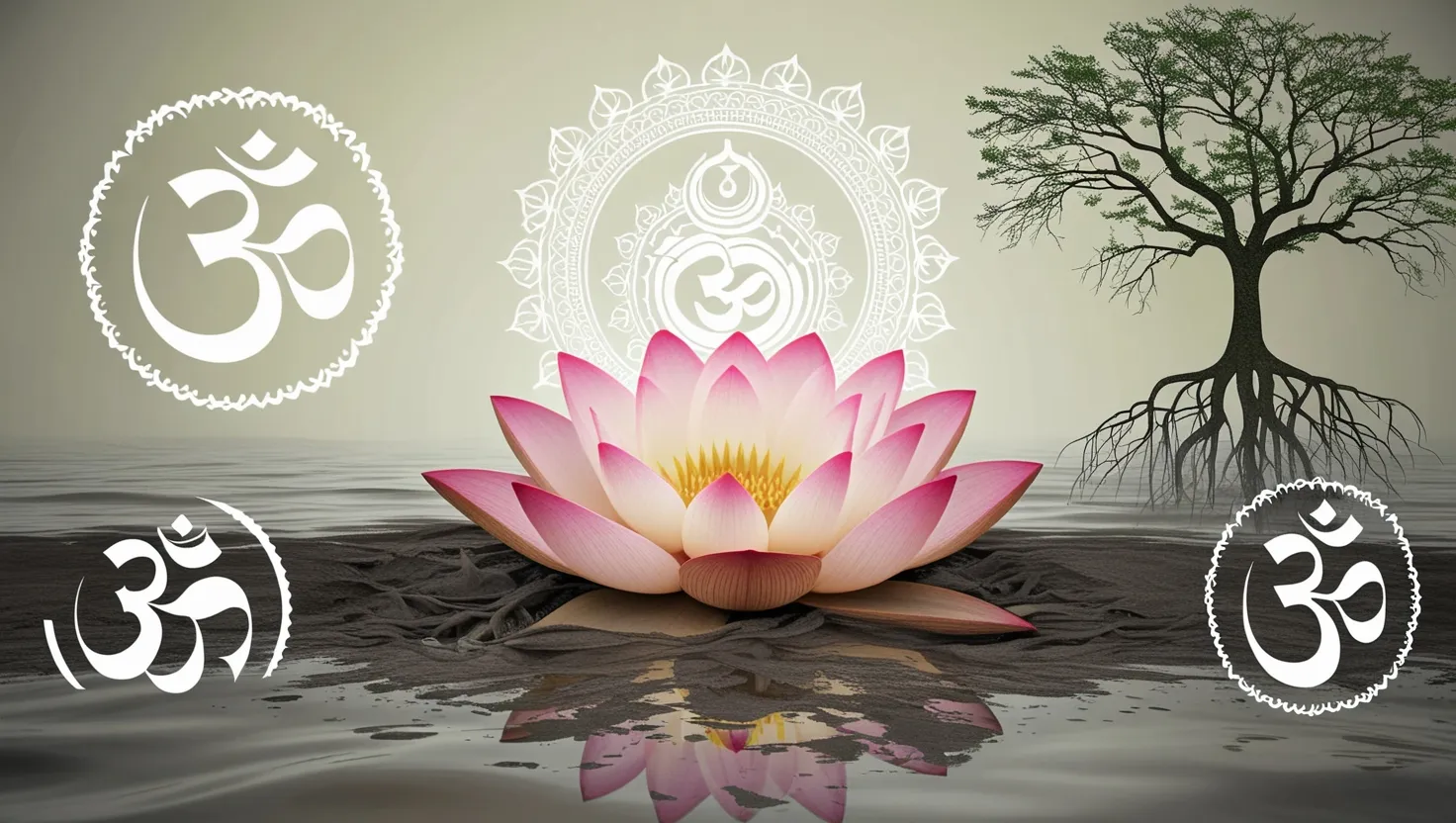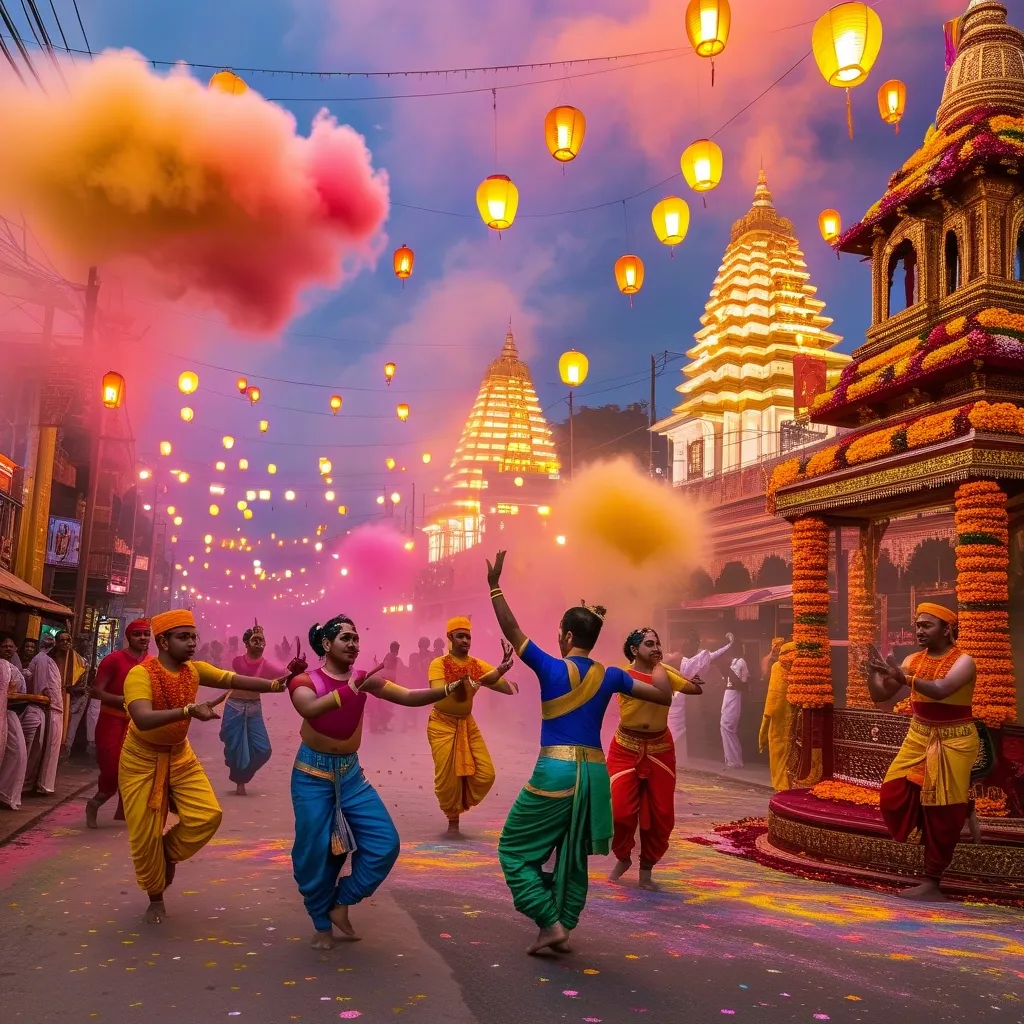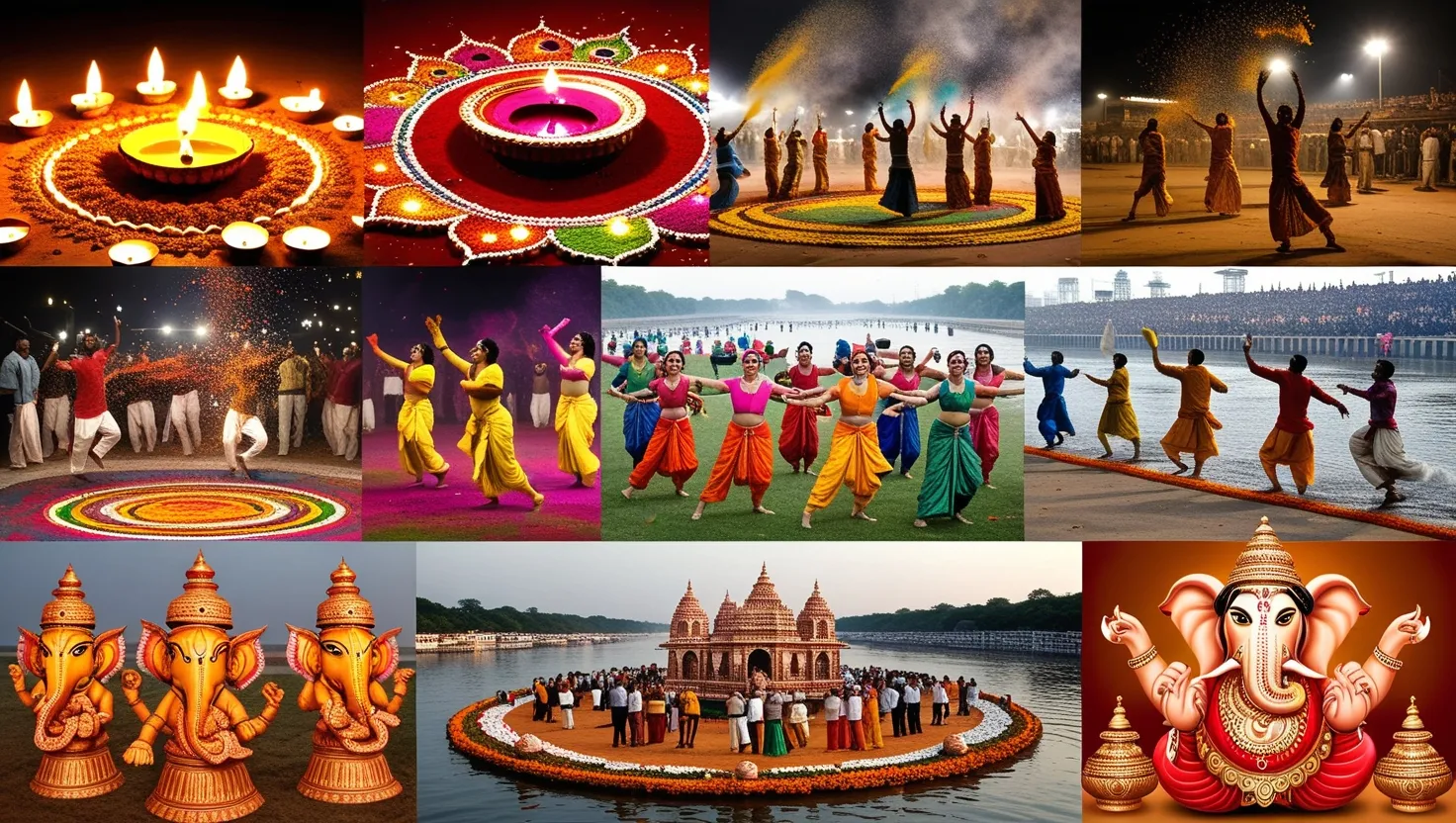In the vast and intricate tapestry of Hinduism, symbols play a crucial role in conveying the depth and complexity of its philosophical and spiritual teachings. These symbols are more than just visual representations; they are gateways to understanding the very fabric of the universe and our place within it.
Let’s begin with the Om symbol, often referred to as the prime symbol of Hinduism. This sacred sound is believed to be the primordial vibration from which the universe was created. When you chant Om, you are resonating with the cosmic vibrations that underpin all existence. It’s a sound that embodies the trinity of Brahma, Vishnu, and Shiva – the creator, preserver, and destroyer – and represents the three gunas or energies of nature: sattva, rajas, and tamas. As the great Hindu sage, Adi Shankara, once said, “The syllable Om is the supreme symbol of the Absolute.”
The Power of Om
Meditating on Om is a powerful practice that can bring peace, clarity, and unity to one’s mind. It’s a tool that helps practitioners connect with the divine, invoke spiritual guidance, and attain inner peace. The sound of Om is so profound that it is often found at the beginning and end of Hindu scriptures, serving as a reminder of the ultimate truth that these texts aim to convey.
Moving on to another ancient and revered symbol, the Swastika, we find a symbol that has been misunderstood in modern times due to its unfortunate association with negative ideologies. In Hinduism, the Swastika is a positive symbol that represents good fortune and well-being. It is often drawn at the entrance of homes, on new vehicles, and near home temples to invite prosperity. The four arms of the Swastika signify the four Vedas and the four goals of human life: Dharma (duty), Artha (wealth), Kama (pleasure), and Moksha (liberation).
The Blooming Lotus
The Lotus flower is another symbol that holds significant spiritual meaning. This flower blooms beautifully in muddy waters yet remains unstained, symbolizing purity and spiritual awakening. It represents the potential for spiritual growth even in the midst of worldly challenges. Many Hindu deities are depicted holding or sitting on a Lotus, emphasizing its sacredness. The Lotus is a reminder that spiritual growth is possible in any environment, as long as one maintains a pure and steadfast heart.
The Trident of Lord Shiva
The Trishul, or trident, associated with Lord Shiva, is a symbol of protection and power. This three-pronged weapon represents the three gunas of nature and the balance of these forces in the universe. Lord Shiva, as the governor of the past, present, and future, wields the Trishul to destroy evil, ignorance, and ill. The Trishul is a powerful reminder of the need for balance and the constant struggle between good and evil.
The Sacred Mark of Tilak
The Tilak, a mark worn on the forehead, varies in shape and color depending on the sect. It represents the third eye of spiritual wisdom and serves as a reminder of one’s devotional practices. The Tilak is a physical manifestation of one’s spiritual journey, a constant reminder to stay focused on the path to enlightenment. As Swami Vivekananda once said, “The greatest glory in living lies not in never falling, but in rising every time we fall.”
The Formless Divine: Shiva Lingam
The Shiva Lingam symbolizes the formless nature of the divine. It represents the union of masculine and feminine energies and is a focal point for worship in many temples. The Lingam is not just a physical object but a representation of the all-auspicious aspect of Shiva. It signifies the place of dissolution of the disintegrated universe, reminding us of the cyclical nature of existence.
The Conch Shell: A Call to the Divine
The Conch Shell, or Shankha, is another symbol that holds great spiritual significance. Used in rituals, its sound is believed to dispel negative energies and invoke the divine presence. When blown correctly, the Shankha produces the sound of Om, purifying the atmosphere and creating an environment of goodwill and calm. The sound of the Shankha is a call to the divine, a reminder of the interconnectedness of all life.
The Banyan Tree: A Symbol of Life and Shelter
While not as widely recognized as some of the other symbols, the Banyan tree holds a special place in Hindu iconography. It symbolizes long life, immortality, and good health. The Banyan tree, with its vast network of roots and branches, represents the interconnectedness of all life forces. It is a symbol of life and shelter, reminding us that just as the tree protects and shelters others, the divine protects humans from harm.
The Interconnectedness of All Life
These symbols, each in its own unique way, highlight the interconnectedness of all life. They remind us that we are part of a larger cosmic web, where every action and thought has a ripple effect. As the Bhagavad Gita says, “You have a right to perform your prescribed duties, but never to the fruits of your actions.”
A Visual Representation of Profound Concepts
These sacred symbols continue to play a vital role in Hindu spiritual practices, offering visual representations of profound philosophical concepts. They serve as reminders of the deeper truths that underlie our existence and guide us on our journey towards spiritual enlightenment.
In the end, these symbols are not just static images but dynamic gateways to understanding the mysteries of the universe. They invite us to reflect, to meditate, and to connect with the divine within and around us. As we delve into the meanings of these symbols, we are reminded of the wisdom of Ramana Maharshi: “The greatest obstacle to enlightenment is the mind.”
So, as we explore these sacred symbols, let us ask ourselves: What do they mean to us personally? How can we incorporate their significance into our daily lives? And how can they guide us on our own spiritual journeys? The answers to these questions lie not just in the symbols themselves but in the depths of our own hearts and minds.






